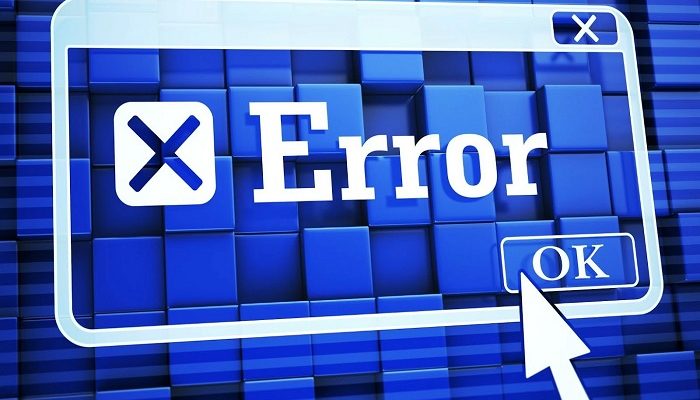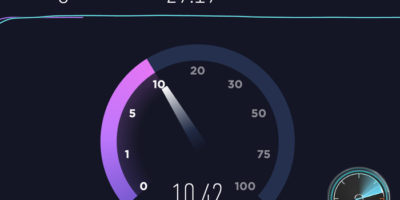Errordomain=Nscocoaerrordomain&Errormessage=Opgegeven Opdracht Niet Gevonden.&Errorcode=4”. If you’ve been trying to troubleshoot a technical issue, you’re probably familiar with this error message. It’s a common one that shows up when a user tries to do something on a computer or device, and it’s not allowed. The NSCocoaErrorDomain is the error domain, and the Opgegeven Opdracht Niet Gevonden is the error message. The Errorcode=4 is the error code.
What is an ErrorDomain?
An ErrorDomain is a computer-generated message displayed when an application or system encounters an error. The message typically includes the domain name (such as Nscocoaerrordomain), an error message (such as Opgegeven Opdracht Niet Gevonden), and an error code (such as 4). The purpose of an ErrorDomain is to inform users about the error that has occurred so that they can take action to correct it. The domain name helps identify the error’s source, while the error message and code provide additional information about the problem. By understanding the source of the error, users can take action to remediate the issue and restore the system to its normal operations.
What is an NSCocoaErrorDomain?
An NSCocoaErrorDomain is a macOS error domain representing errors occurring in Cocoa frameworks, such as AppKit and Foundation. This error domain covers Cocoa-specific errors, such as when a command or request is not found. In this case, the error message is “Opgegeven Opdracht Niet Gevonden,” and the error code is 4. An NSCocoaErrorDomain can occur when a command or request is not found or a requested resource is unavailable. It can also occur when a command with incorrect parameters or input type is issued. This type of error can be difficult to debug and solve, as various issues can cause it. Fortunately, the NSCocoaErrorDomain contains a range of detailed error codes that can help developers to diagnose and solve the problem.
What is the error message “Opgegeven Opdracht Niet Gevonden”?
The error message “Opgegeven Opdracht Niet Gevonden” is generated by an application when it cannot find a command it was asked to execute. This error is usually found when an application tries to execute an incorrect command or does not have the required permissions to run the command. The Errordomain=Nscocoaerrordomain and Errorcode=4 are also associated with this error message, which indicates that the error is specific to the Nscocoaerrordomain application.
The application must be restarted to fix this error, or the command must be checked for accuracy. If the command is correct, the user must check the permissions associated with the application to ensure that the application has the required permissions to execute the command. If the error persists, the user should contact technical support to resolve the issue.
What is error code 4?
Error code 4 is an error that is associated with the NSCocoaErrorDomain. This error code is triggered when a command is not found within the specified domain. The error message displayed is “Opgegeven Opdracht Niet Gevonden.” This Dutch phrase translates to “specified command not found.”
Error code 4 is a common error that can occur in many different applications. It is usually caused by a wrong command syntax or a missing command necessary to execute a certain task. An incorrect file path or URL can also cause it. Sometimes, the error code can be caused by a corrupted file or an outdated application version.
When an error code 4 occurs, it is important to identify and fix the source of the issue. If the error is related to a missing command, the user should try to locate the command and include it in the code. If the error is related to an incorrect file path or an outdated application version, the user should update the application or ensure the file path is valid.
Error code 4 is an error that can be easily fixed if the source of the issue is properly identified. It is important to take the time to troubleshoot the error message and make sure that any necessary commands are included in the code before attempting to execute the task.
What Causes Nscocoaerrordomain Error Code 4?
The Nscocoaerrordomain error code 4 is an error code that is associated with the Cocoa framework in macOS. It indicates that the requested command could not be found. This can be due to various reasons, such as an incorrect command being sent to the Cocoa framework or an outdated version of the Cocoa framework being used. This error code is commonly encountered when a user attempts to access a feature not supported by the current version of the Cocoa framework. It is also possible that the Cocoa framework does not support the command requested or was mistyped.
In addition to the above causes, it is also possible that the Nscocoaerrordomain error code 4 is triggered due to an issue with the application’s configuration settings. For example, if the application is not configured properly, this can result in the requested command not being found. Another possible cause could be a bug in the Cocoa framework itself or an issue with the user’s system settings. If any of these issues are present, updating the application and the Cocoa framework to the latest version is important to ensure the requested command can be found.
It is also possible that the Nscocoaerrordomain error code 4 is triggered due to a conflict between the application and the user’s system settings. For example, if the application is set to run in a compatibility mode unsupported by the Cocoa framework, this can cause the requested command to be unavailable. In such cases, it is important to ensure that the application is set to run in a compatible mode for the requested command to be found.
Finally, the Nscocoaerrordomain error code 4 can also be triggered by a corrupted or outdated version of the Cocoa framework. In such cases, updating the Cocoa framework to the latest version is important to ensure the requested command can be found.
In conclusion, the Nscocoaerrordomain error code 4 indicates that the requested command could not be found. Common causes of this error include:
An incorrect command is being sent to the Cocoa framework.
An outdated version of the Cocoa framework is being used.
A conflict between the application and the user’s system settings.
A corrupted or outdated version of the Cocoa framework.
To resolve this issue, it is important to ensure that the requested command is valid, that the Cocoa framework is up-to-date, and that the application is set to run in a compatible mode.
Possible Solutions
When encountering the ErrorDomain=NSCocoaErrorDomain, ErrorMessage=Opgegeven Opdracht Niet Gevonden., and ErrorCode=4, there are a few possible solutions. The first possible solution is to ensure the application is properly installed and configured on the target machine. If the application is installed correctly, the user should check its permissions to ensure it has the proper permissions to access the required resources. Additionally, the user should check the log files for the application to see if any errors or warnings could be causing the issue.
Another possible solution is to check the system memory and CPU usage to ensure the system is not overloaded and can process the request. If the system is overloaded, then the user should try to reduce the load by closing any unnecessary applications or processes. Additionally, the user should check the network connection to ensure the application can communicate with the required services.
Finally, if none of the above solutions have worked, the user should consider reinstalling the application. This will reset the application and allow the user to start fresh. It is also important to note that users should back up their data before reinstalling the application.
When encountering the ErrorDomain=NSCocoaErrorDomain, ErrorMessage=Opgegeven Opdracht Niet Gevonden., and ErrorCode=4, there are a few possible solutions that can be tried. From checking the application permissions to reinstalling the application, the user should be able to get to the root of the issue and find a successful resolution.
Conclusion
The Error Domain “Nscocoaerrordomain” along with the Error Message “Opgegeven Opdracht Niet Gevonden” and Error Code “4” indicates that a command has not been found or is not being recognized. This could mean the command is not correctly written or executed, or the system does not support a certain command. The best way to resolve this issue is to double-check any associated variables’ command syntax and syntax. If that does not help, consult the system documentation for a list of supported commands.





















Comments